Introduction
APIs, or Application Programming Interfaces, play a vital role in modern software interaction. They serve as the communication channels that allow different applications to understand and respond to each other's requests. By adhering to a standard format, APIs streamline the integration process, enabling developers to access the functionalities they need without dealing with complex code.
However, challenges such as robust documentation and security risks must be addressed to ensure seamless integration. In this article, we will explore the benefits and outcomes of using APIs, the different types of APIs, API request methods, API endpoints, API authentication and authorization, and best practices for API development. We will also discuss common API use cases, troubleshooting common API issues, and provide further reading and resources for those looking to enhance their API expertise.
Join us as we delve into the world of APIs and discover how they can revolutionize software development.
What is an API?
APIs, or Application Programming Interfaces, are the backbone of modern software interaction. They provide a set of protocols and rules that enable disparate applications to communicate effectively—think of APIs as interpreters that allow software to understand each other's requests and provide the necessary responses. By adhering to a standard format, APIs ensure that developers can access the functionalities they need without delving into the complex code that powers other systems, thus streamlining the integration process.
This efficient communication channel is not without its challenges, however. Aluisio, a seasoned software engineer with extensive experience in integrating various enterprise systems, emphasizes the importance of robust documentation. Without clear instructions and structured responses, the path to seamless integration is riddled with uncertainties.
To counteract this, one must establish a centralized documentation hub, which includes vital information such as partner documentation links and key contacts.
APIs have evolved beyond simple data exchange. They now serve as the core of enterprise information systems, where API gateways play an indispensable role. These gateways act as a secure point of entry, offering LDAP Single Sign-On capabilities and managing internal and external services.
They enhance system reliability and security by providing features like monitoring and traffic control.
Despite the many advantages, there are risks associated with API integration. Recent news has shone a light on API security, with studies indicating that 60% of organizations in the U.S. and Europe have experienced at least one data breach linked to APIs in the last two years. Thus, it's critical to not only focus on developing APIs but also to ensure they're secure and do not expose more data than necessary.
To mitigate these risks and optimize API utility, one must adopt a needs-driven approach. As Aluisio points out, understanding the true needs of customers, rather than just their stated wants, is crucial. This perspective is echoed in the technical disadvantages identified in Spotify's Backstage platform, where the rigidity in data models and manual data ingestion can lead to inefficiencies and maintenance issues.
Lastly, governance should not be overlooked. Establishing an API governance model ensures that each API is tracked, justified, and actively maintained, offering a clear view of the data flow and its business relevance. With 93% of organizations recognizing the relevance of APIs and 86% acknowledging that APIs prevent operational silos, the strategic implementation of APIs is clearly pivotal for modern businesses to function effectively and securely.
Why Use APIs?
Application Programming Interfaces (APIs) are heralded as the crown jewels of software development, a testament to their significance in the digital realm. These indispensable tools serve as translators between disparate software programs, enabling them to communicate effectively and share functionalities. Google even acknowledges APIs as the cornerstone of software innovation, which underpins their ubiquitous presence across industries.
The role of APIs extends beyond just technical utility; they represent a collaborative nexus where developers and stakeholders converge to refine systems and ignite a new wave of creative solutions. The emergence of big data and cutting-edge technologies further accentuates the importance of APIs in today's interconnected ecosystem, empowering developers to integrate with external services seamlessly. This integration is not a mere convenience but a critical component in the evolution of software applications, allowing for the creation of more sophisticated and robust systems.
By harnessing APIs, developers can tap into a wellspring of pre-existing services, sidestepping the need to 'reinvent the wheel' and instead directing their focus on crafting unique and innovative features. On the business front, APIs are the linchpins that enable organizations to intertwine their applications with third-party platforms, thereby expanding their operational capabilities and audience reach. This synergy among various systems fosters a more cohesive and efficient operational environment, akin to a bustling city center where each department communicates and collaborates fluidly.
Such is the transformative power of APIs that their strategic implementation can lead to automated processes, streamlined data management, and the reduction of manual errors, thereby bolstering productivity and fostering growth. As we delve into the API-first approach, a prevailing practice in the digital transformation landscape, it's evident that APIs are not just facilitating integration but are also reshaping the fabric of enterprise strategies.

Types of APIs
Understanding the diverse landscape of APIs is essential for any developer aiming to craft integrated, efficient software solutions. APIs, or Application Programming Interfaces, serve as a standardized set of rules and protocols allowing different software applications to communicate and interact seamlessly. Here's a closer look at the various types of APIs and their unique purposes:
-
Web APIs: The conduits for communication between web-based applications, Web APIs are rooted in HTTP and RESTful principles. They facilitate interactions over the web and are integral in connecting services like social media platforms, e-commerce sites, and more.
-
Library APIs: Serving as a toolkit for developers, Library APIs provide a suite of functions and procedures to perform specific tasks. These APIs are a core component of software development kits (SDKs) and programming languages, offering pre-written code to streamline development processes.
-
SOAP APIs: Leveraging the XML-based SOAP protocol, SOAP APIs are designed for enterprise-level applications requiring high security and transactional reliability. They offer a more structured approach to API communication, which is critical in complex systems like financial services and corporate IT infrastructures.
-
JSON-RPC and XML-RPC APIs: These APIs employ JSON or XML for remote procedure call (RPC) style communication. They provide a lightweight mechanism for executing functions on remote systems, enabling developers to build APIs that are both flexible and easy to use.
-
GraphQL APIs: Revolutionizing data retrieval, GraphQL APIs empower clients to precisely define the information they need, minimizing the risk of over-fetching or under-fetching data. This approach is particularly valuable when dealing with large, complex data sets as it enhances performance and developer experience.
Each API type offers unique advantages, and the choice of which to implement depends on project requirements and technological environments. As the digital world continues to evolve, the role of APIs in facilitating effective communication and integration between disparate software systems becomes ever more crucial.
API Request Methods
APIs, or Application Programming Interfaces, are akin to a universal remote for web services, allowing developers to control different aspects of a system without needing to delve into its complexities. Just as a universal remote has buttons designated for changing channels or adjusting lights, APIs offer request methods tailored for specific operations on resources.
- GET: Think of the GET method as the button you press to display a channel's content; it retrieves data from the server, like requesting a TV program's information.
- POST: Similar to creating a new channel, POST submits data to the server to create a new resource.
- PUT: If you want to change the programming of an existing channel, PUT updates an existing resource on the server.
- DELETE: Just as you might remove a channel from your lineup, DELETE removes a resource from the server.
- PATCH: And when you need to adjust a few settings on a channel without a complete overhaul, PATCH partially updates an existing resource.
These methods form the bedrock of web interactions, standardizing the way we ask for and send information—akin to making requests at a restaurant, where the kitchen (server) processes our orders (requests). However, with the rise of API breaches due to inadequate security, it's clear that understanding and securing these request methods is paramount. Recent data indicates that 78% of cybersecurity teams have faced API-related security incidents in the past year alone, underscoring the need for vigilance.
Moreover, the ability to provide relevant examples of API behavior is crucial, as it can help users understand and verify the expected outcomes. For instance, automated testing, including property-based and API testing, aids in identifying both expected and unexpected behaviors, thereby enhancing API robustness. In the face of limitations, such as rate limits exemplified by 'HTTP/1.1 429 Too Many Requests', understanding the characteristics of requests is critical to prevent operational disruptions.
Remember, each request method has its own nuances and purposes, shaping the way we interact with systems remotely and ensuring our digital interactions are as seamless as possible.
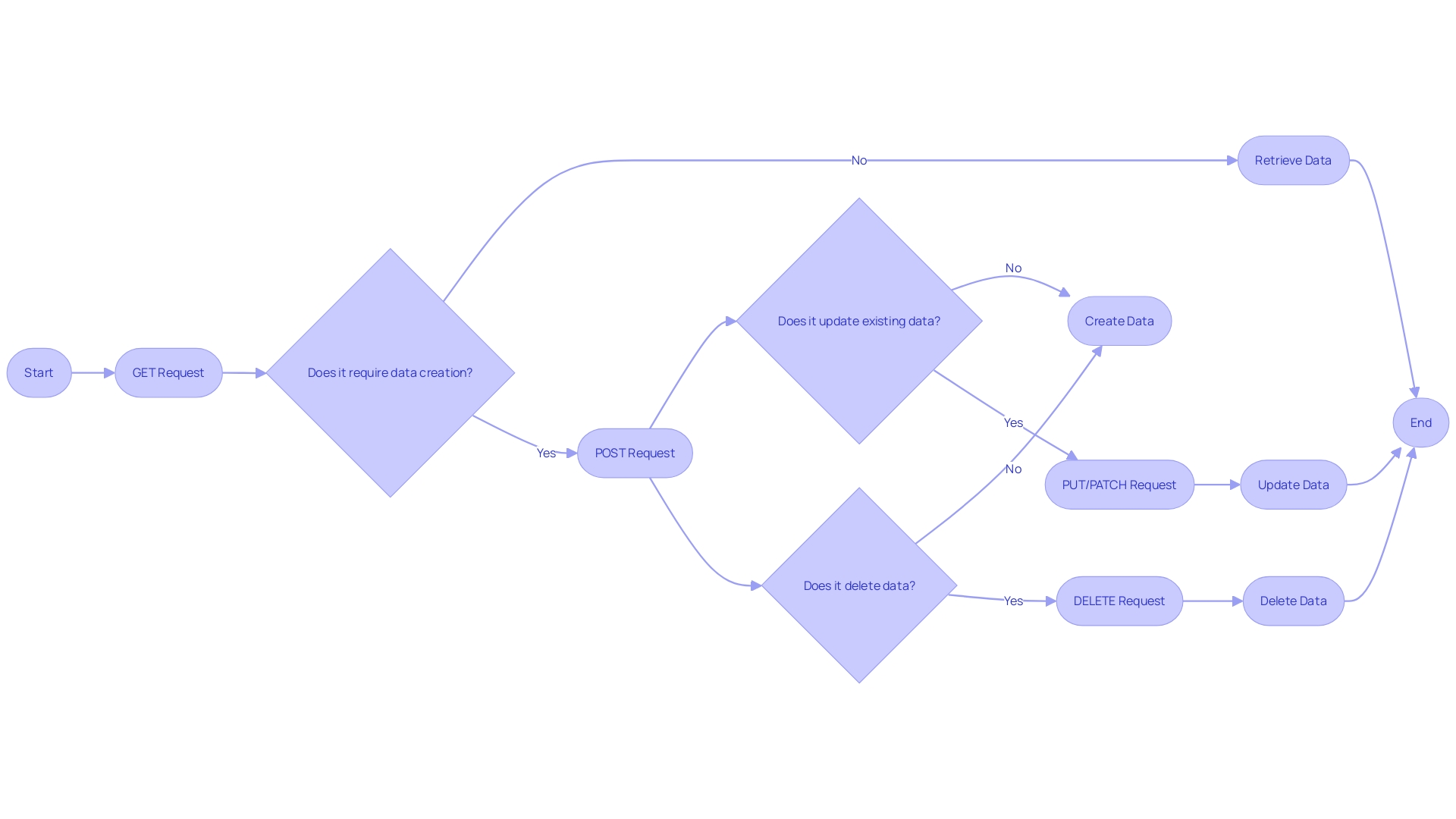
API Endpoints
API endpoints are akin to dedicated channels on a universal remote, each assigned to facilitate a specific interaction between developers and the services offered by an API. For instance, one endpoint may enable the retrieval of user profiles, another may initiate the creation of a post, while a third might handle image uploads. These endpoints, architected in a RESTful manner, allow developers to employ HTTP requests to perform actions on the API, manipulating and retrieving data as required.
To ensure an API's effectiveness and security, it's essential to have a deep understanding of its domain and to prioritize functionalities according to their significance and impact. This was highlighted by Chick-fil-A's customer technology team, who experienced challenges due to poorly documented or implicit API contracts, leading to necessary collaboration between teams to interact with their APIs. Through a detailed analysis of their domain and by identifying specific functionalities, they were able to design better APIs, thus improving their overall efficiency and the flow of operations.
Moreover, APIs are increasingly becoming targets for cybercriminals due to inadequate security measures. A staggering 78% of cybersecurity teams have encountered an API-related security incident in the past year, prompting an urgent need for better visibility and security protocols. As we explore the world of RESTful endpoints, it's crucial to consider these aspects for a robust and user-friendly web application development.
By focusing on the 'needs' versus the 'wants', we can create API platforms that address multiple customer requirements effectively, steering clear of the pitfalls of misunderstanding customer needs as highlighted in the shared industry experiences.
Understanding the importance of well-structured API documentation and secure endpoint design is akin to mastering the use of a universal remote. Just as the remote abstracts away the complexity of controlling various devices, a well-designed API allows seamless interaction without the need for developers to comprehend the intricate details of the backend systems.
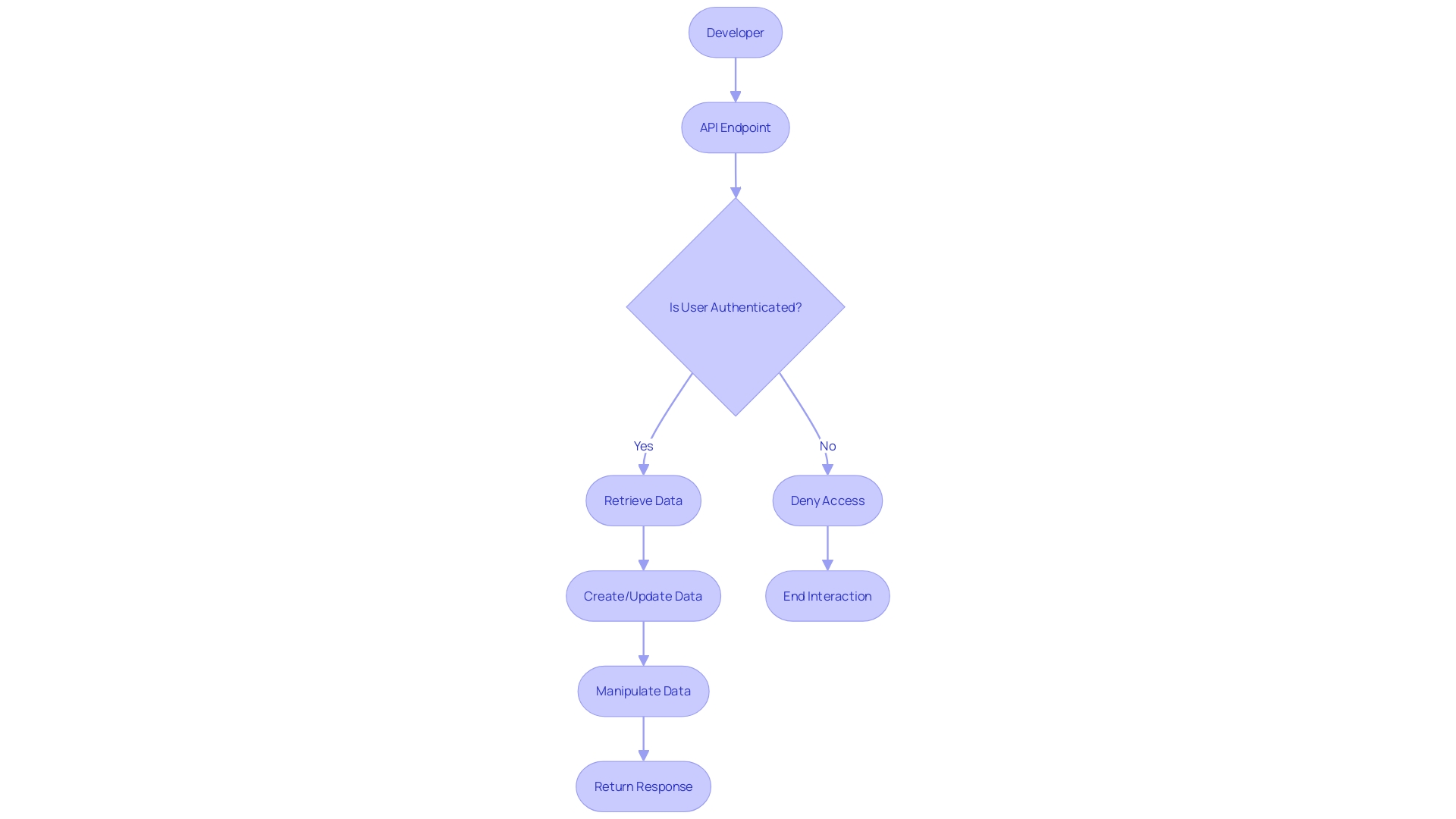
API Authentication and Authorization
Securing API access and safeguarding sensitive information starts with two critical processes: authentication and authorization. Authentication acts as the first line of defense, confirming that only approved users or systems can connect to your API. A variety of methods exist for this, including:
- API keys
- Tokens, notably OAuth tokens
- Username and password combinations
Once authenticated, authorization comes into play, dictating the operations that the user or application is permitted to carry out. It's about assigning roles, setting permissions, and controlling access to different resources and capabilities.
Consider the analogy of an API gateway functioning like a central checkpoint in a vast enterprise. It's not just a bridge linking multiple services; it's a crucial infrastructure that must provide robust security features, such as support for LDAP Single Sign-On (SSO). These gateways boost security, enhance user efficiency, and streamline system management.
In microservice architectures, managing access can follow different strategies. Services might independently control access, akin to clubs with separate bouncers for each room. Alternatively, an API Gateway might act as the singular authority, centralizing the access control.
Recent statistics underline the urgency of robust API security measures. A staggering 78% of cybersecurity teams have encountered an API-related security incident within the last year. Although 72% maintain a full inventory of their APIs, only 40% can monitor those that handle sensitive data.
As a result, 81% recognize that API security has become more pivotal than ever before.
The rising tide of API breaches, propelled by insufficient security measures, has placed an emphasis on the need for more sophisticated authentication methods. Hackers have increasingly focused on exploiting API vulnerabilities, such as through code injection or manipulating API responses, to gain unauthorized access or extract sensitive data. The repercussions of these breaches are significant, impacting both enterprises and their customers.
In response to these challenges, developers and organizations must evaluate and implement a variety of authentication approaches, including:
- Session-based Authentication: A traditional method often used in web applications.
- JWT (JSON Web Tokens): Facilitates secure information exchange.
- Token-based Authentication: Provides tokens that must be presented with each request.
- Single Sign-On (SSO): Enables users to access multiple services with a single set of credentials.
- OAuth 2.0: A widely-adopted standard for authorization that provides secure delegated access.
By understanding and adopting these methods, developers can fortify their API gateways and protect against unauthorized access and potential breaches.
How to Use an API
Embarking on the journey of API integration involves a series of steps that developers follow to harness the capabilities of external services, enhancing their application's functionality. Initially, obtaining API credentials is crucial, where one might need to register for API keys, tokens, or client IDs. Next, a deep dive into the API documentation is essential; it's the roadmap detailing endpoints, parameters, and the expected responses that ensure effective communication between software components.
Setting up the development environment comes next, which may include installing necessary libraries or SDKs. This prepares the ground for making API requests, which involves using HTTP request methods to fetch or send data to the desired endpoints. Finally, handling API responses is about processing the returned data and managing errors or status codes appropriately.
The use of APIs is a testimony to their indispensable role in modern software development, offering a seamless bridge for applications to access a multitude of web services, databases, and systems. Leveraging APIs not only propels software projects by enhancing efficiency and speed but also mitigates the need to build complex functionalities from scratch. However, amidst the integration process, one must not overlook the importance of API security.
Proper governance and understanding of the data exchanged through APIs ensure that privacy and information security are upheld, as highlighted by recent industry conversations and studies.
Setting Up Your Development Environment
Setting up your development environment is a foundational step for successful API integration. Begin by installing the necessary dependencies, libraries, or SDKs. Configuration of authentication credentials, such as API keys or tokens, is also vital.
These credentials are essential for authenticating your API requests and ensuring secure communication between your application and the API.
Choose a code editor that complements your workflow and have tools ready for making HTTP requests. It's helpful to create a dedicated section for your API documentation, as suggested by software engineer Aluisio, who emphasizes the importance of having a centralized location for documentation, including links to the partner's API documentation and contact information for quick reference and support.
The rise of APIs in software development underscores their significance. With the plethora of API tools available, it is crucial to select ones that align with your project's specific requirements, budget, and use cases. This selection process is an integral part of setting up your development environment, as the right tools can streamline integration and facilitate API testing.
API testing, which is crucial for ensuring the robustness and reliability of software applications, should be incorporated into your environment setup. Regular inspection and evaluation through API testing help maintain the stability and security of your APIs. Tools like Postman are favored for their user-friendly interface and comprehensive features, aiding in API test automation—a 'health check' for your software's APIs.
Remember, as APIs continue to be the linchpin of modern software development, it is not just about building platforms correctly but about building the right thing that addresses the needs of multiple customers. Establishing a well-prepared development environment with thorough documentation and the right tools can significantly reduce regrets in technology and contribute to building long-lasting, efficient platforms.
Making API Requests
Executing API requests is a critical process in software development that necessitates sending HTTP requests to designated endpoints. For these requests to be successful, developers must meticulously include parameters, such as query strings and headers, in the request payload. Precise API documentation is indispensable for developers to understand the necessary structure and parameters for each endpoint.
Handling the API response is equally crucial, involving the interpretation of status codes, analyzing response bodies, and processing any additional headers that may be included.
A case in point of API intricacies is the swift escalation of issues in mobile app maintenance, where even long-standing, stable applications can experience sudden access problems due to API changes or updates. This highlights the importance of thorough API testing and documentation to prevent unexpected disruptions in service.
For APIs to serve their role effectively, it is essential to choose the right one that aligns with the developer's needs. RESTful APIs, for example, are acclaimed for their simplicity in data retrieval and manipulation.
Recent statistics underscore the growing significance of APIs, with a 2021 survey by Vanson Bourne reporting that 93% of organizations deem APIs as crucial to their operations. Moreover, 97% of these organizations recognize the synergistic benefits of integrating APIs with microservices to bolster productivity and customer satisfaction.
Developers embarking on the journey of API integration can take cues from the decentralized finance (DeFi) system on Ethereum, which showcases how APIs enable seamless global transactions and digital economies. This is a testament to the transformative potential of well-implemented APIs in facilitating innovation and inclusivity in the digital world.
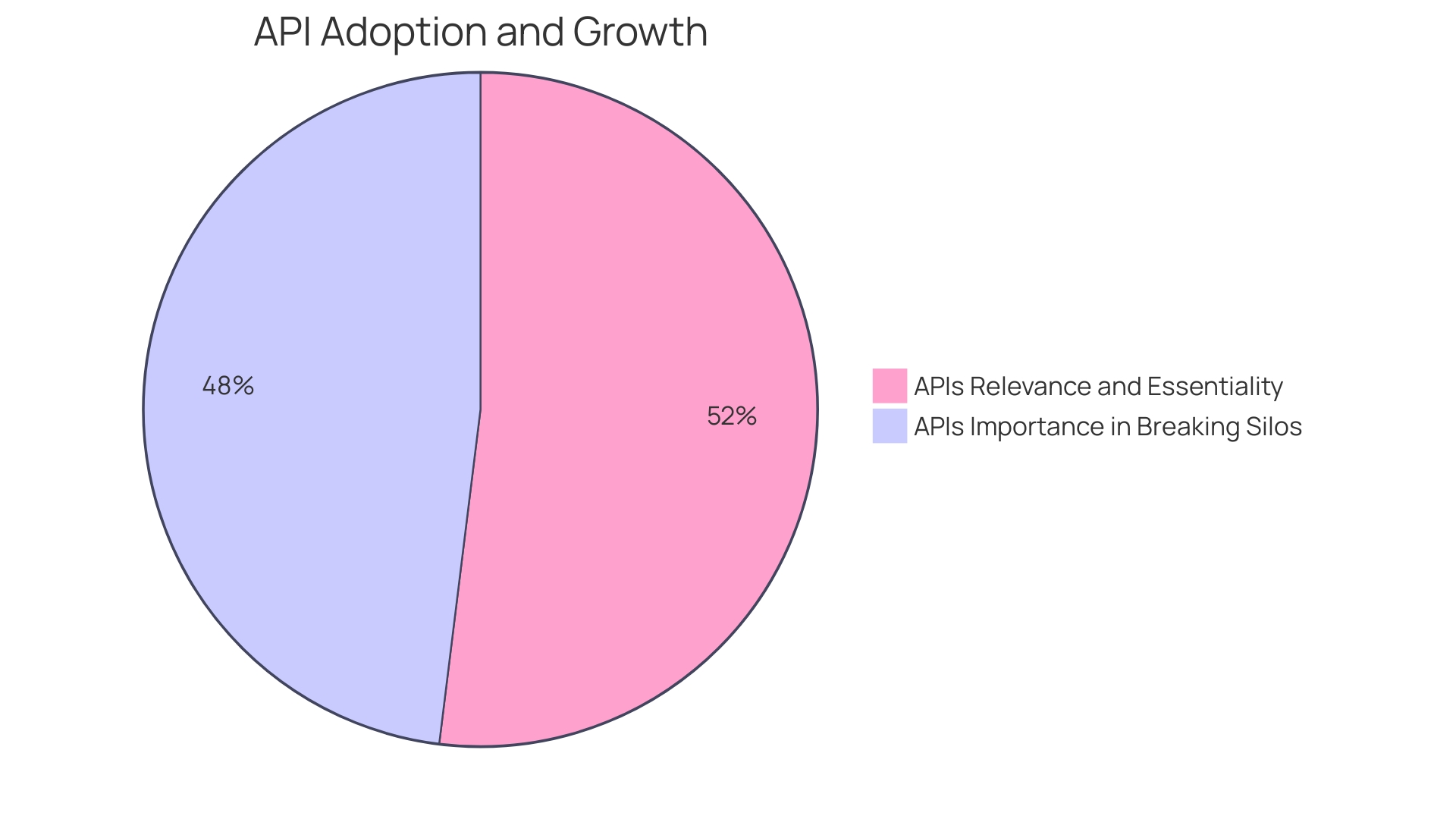
Handling API Responses
When managing API responses, one should meticulously interpret the returned data. It's crucial to inspect the status code to discern whether the API request was successful or stumbled across an error. Parsing the response body is equally important, whether it's formatted in JSON, XML, or another structure, to distill the necessary information.
Robust error handling is imperative to manage exceptions and supply users with pertinent feedback. Moreover, developers must adeptly navigate rate limiting and pagination to ensure seamless integration and system resilience.
The importance of such meticulous handling becomes apparent when we consider the evolution of software development. Initially, tasks like authentication and content management were built in-house, and the concept of using APIs as an intermediary between frontend and backend systems was non-existent. However, as the separation of concerns between frontend and backend development became more pronounced, APIs emerged as a critical layer to facilitate this division, thus mandating proficient response management.
In the context of rate limiting, it's illustrative to look at real-world incidents where overlooking such constraints led to significant operational disruptions. For example, a critical microservice reliant on a third-party API once exceeded its rate limit, causing severe operational impact for weeks. This underscores the necessity for developers to recognize and handle API rate limits proactively to prevent such issues.
Furthermore, the categorization of information within API documentation plays a pivotal role in developer efficiency. Providing clear distinctions between Tutorials, Guides, Explanations, and Reference materials can expedite the learning process and streamline contributions from the community. Such organization is essential for developers to quickly find and utilize the information they need to handle API responses effectively and avoid common pitfalls.
Statistics reinforce the growing significance of APIs, with research by Vanson Bourne revealing that 93% of organizations acknowledge APIs as crucial to their operations. The same research highlights that 97% of respondents see APIs and microservices as complementary, emphasizing the benefits of their integration, such as heightened customer satisfaction and improved productivity. This data not only attests to the importance of API management but also suggests that proficiency in this area is becoming an indispensable skill for developers in an increasingly API-centric world.
In summary, developers must give due diligence to API response management, including status code verification, response parsing, and error handling, while also being mindful of rate limiting and pagination. Doing so is critical to the success of modern software applications and services, which rely on the robust and efficient functioning of APIs.
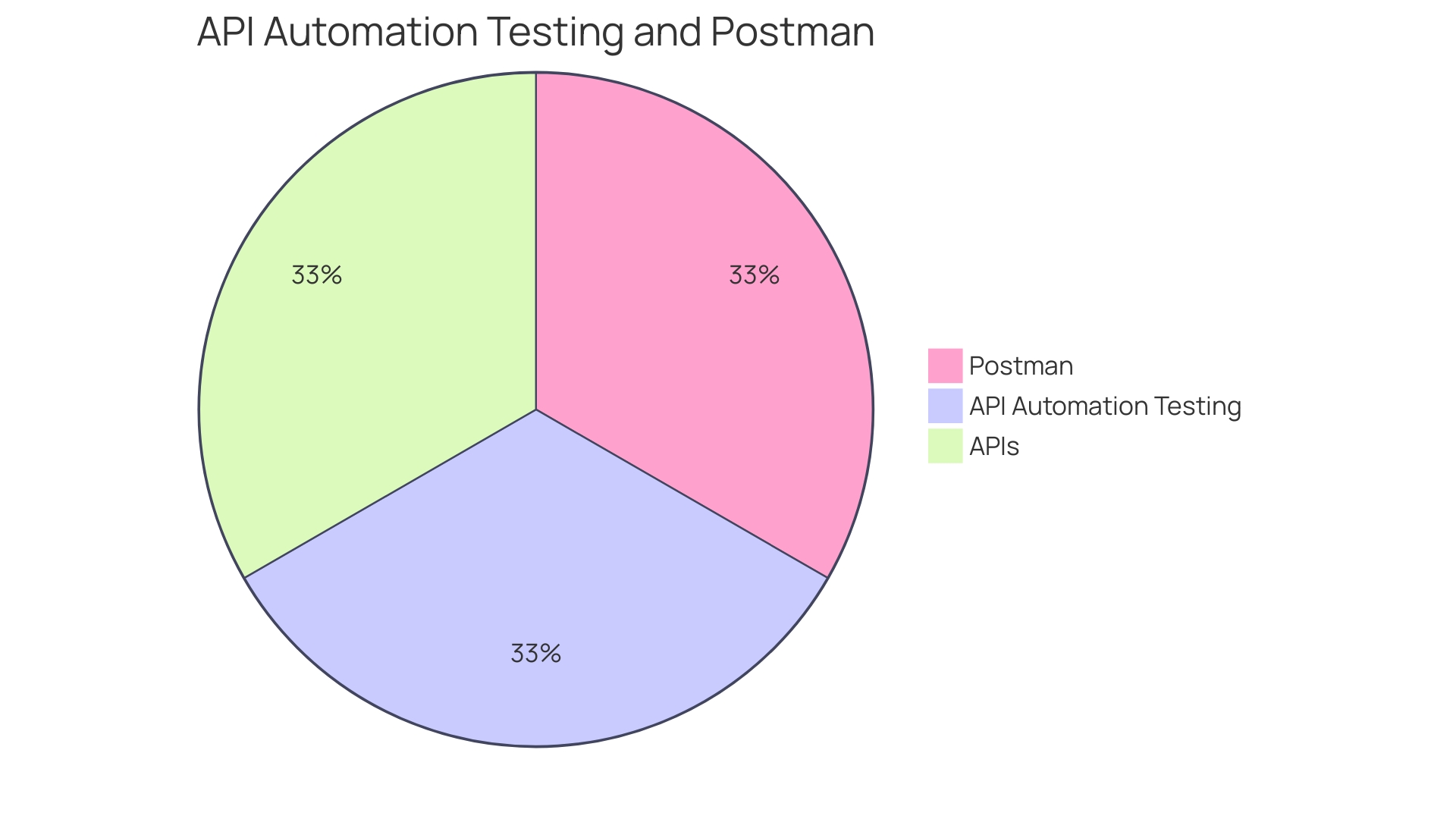
Common API Use Cases
APIs are the backbone of modern software development, offering a myriad of use cases that transcend industries and revolutionize the way we integrate systems and manage data. From streamlining payment processing by connecting with third-party gateways to enhancing user experiences on mobile apps through seamless backend service access, APIs are pivotal in today's digital ecosystem. They enable the creation of mashups, combining diverse functionalities and data for innovative applications, and are instrumental in automating workflows to optimize business processes.
Reflecting on lessons from extensive work with large financial institutions, it's evident that success hinges on addressing customer 'needs' over 'wants'. This insight aligns with the notion that effective API implementation requires a profound understanding of the underlying system requirements. As such, documenting critical use cases is not merely beneficial but essential, allowing users to harness the full potential of products and services.
Indeed, the evolution of technology, underscored by the rapid rise of AI tools like ChatGPT, has placed APIs at the forefront of innovation. They serve as the translators between software programs, facilitating communication and enabling developers to build more sophisticated applications. Google aptly refers to APIs as the 'crown jewel of software development', a testament to their integral role in fostering collaboration and driving progress.
However, challenges persist. Reports highlight the pressing need for improved API security, with 78% of cybersecurity teams experiencing API-related security incidents in the past year. Moreover, a full inventory of APIs doesn't equate to comprehensive oversight, as only 40% have visibility into those that return sensitive data.
This security imperative has escalated the priority of API safeguards significantly.
Statistics further underscore the importance and growth of APIs, with research indicating that 93% of organizations recognize their relevance, and 86% agree that APIs prevent operational silos. The integration of APIs with microservices, as agreed by 97% of surveyed entities, points to enhanced performance, customer satisfaction, and productivity.
As we navigate the complexities of API development, it's crucial to be cognizant of the potential for inefficiencies—ranging from rigid data models to manual data ingestion. By continually refining our approach, we can ensure APIs remain a robust and agile tool for innovation and efficiency in an ever-changing technological landscape.
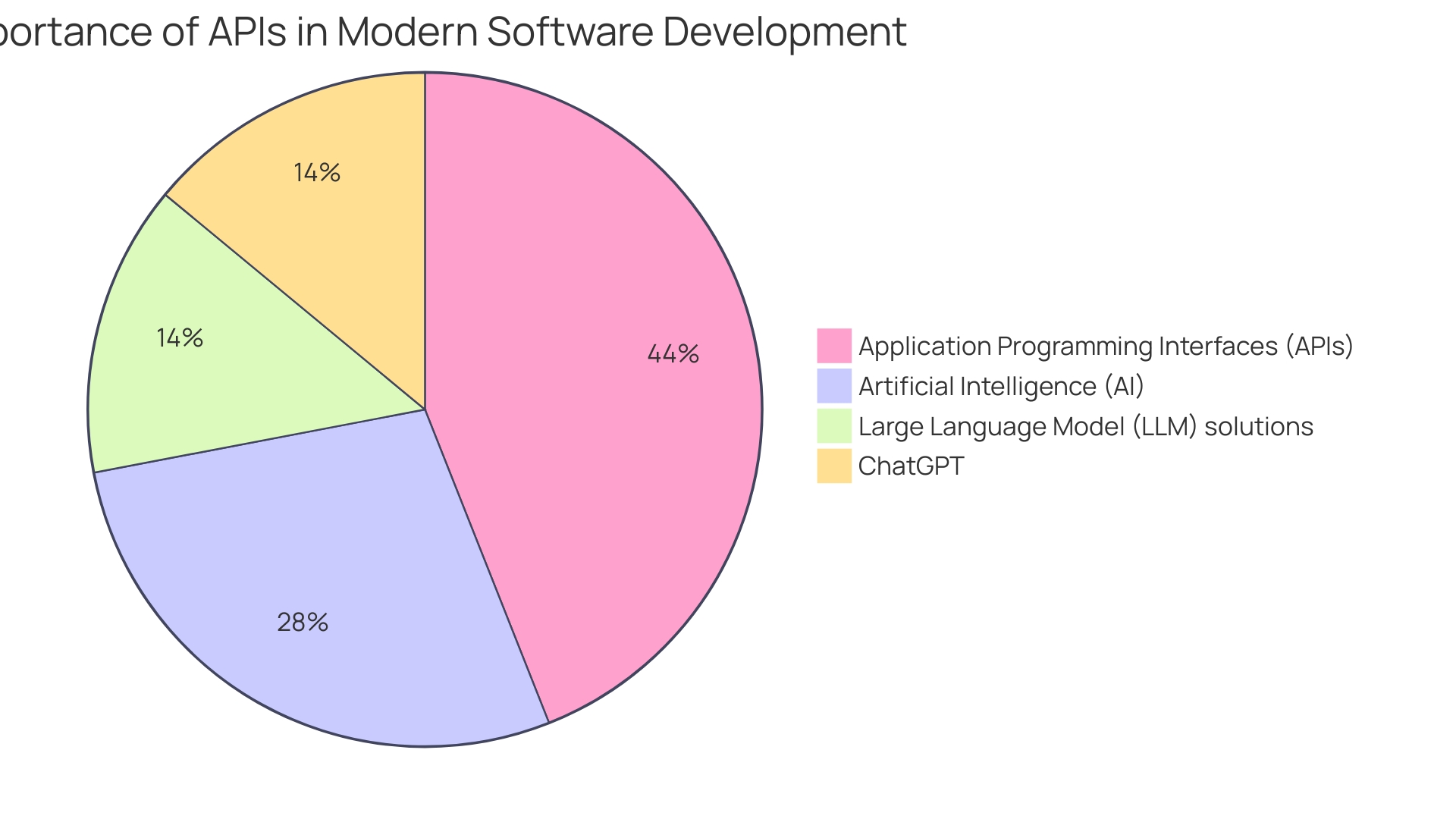
Best Practices for API Development
APIs, the backbone of modern digital convenience, require meticulous crafting to ensure their stability and security. To build APIs that stand the test of time and user expectations, developers must adopt certain practices. Consistent and intuitive naming conventions for endpoints, parameters, and responses are just the starting point.
Comprehensive documentation, including examples and use cases, is vital not only for current use but also for future reference and scaling. Implementing versioning is another cornerstone, allowing for backward compatibility and seamless transitions between updates.
Input validation and sanitization are critical to preventing security vulnerabilities, an ever-present threat in today's digital landscape. This is complemented by rate limiting and authentication mechanisms that safeguard against abuse and unauthorized access. Monitoring and logging usage patterns provides valuable insights into performance issues and user behavior, enabling proactive improvements and adjustments.
Recent breaches reported by 60% of organizations in a study by Traceable and the Ponemon Institute highlight the importance of these practices for API security. API testing cycles further reinforce security and functionality by providing regular checks and balances. This is essential as APIs serve as the communication channels between various software applications, much like diplomatic channels between kingdoms, facilitating the exchange of information and functionality.
Centralized control, such as implementing API resiliency at the API Gateway level, offers strategic advantages by simplifying the implementation and maintenance of resiliency features across all services. As mentioned by an industry expert, evolving standards and the continuous questioning of "best practices" are crucial to avoid stagnation and irrelevance in software development. With proper governance and an understanding of the API ecosystem, organizations can ensure that each API serves a justified business purpose and is properly maintained.
By weaving these best practices into the fabric of API development, one can create robust and user-friendly interfaces that not only meet but exceed user expectations. This approach towards API integration and maintenance paves the way for resilient and efficient systems, capable of adapting to the dynamic demands of our interconnected digital world.
Troubleshooting Common API Issues
Troubleshooting API issues is an essential skill for developers in today's interconnected software environment. Issues can stem from a variety of sources:
-
Authentication Failures: These often occur when credentials are incorrect or not properly configured. Ensuring authentication details are accurate is the first step in resolving these issues.
-
Incorrect API Usage: This could involve errors in the request structure, such as parameters, headers, or the body. A meticulous review of the request against the API documentation can help pinpoint the mistake.
-
Rate Limiting: Encountering 429 errors ('Too Many Requests') indicates that the API's usage limits have been exceeded. It's essential to understand the rate limits and adjust the frequency of requests accordingly. As discussed in a real-world scenario, a backend service relying on a third-party API faced operational disruptions due to breached rate limits, showcasing the importance of managing API calls within the prescribed limits.
-
Server Errors: These are typically indicated by 5xx status codes and can have various root causes. Consulting the API's documentation for known issues or reaching out to the provider can offer insights and possible solutions.
-
Version Compatibility: Ensuring compatibility between client and server API versions can prevent unexpected problems.
API testing is a critical practice that involves evaluating APIs to ensure their correct functioning. Regular performance and stress testing, adherence to best practices in API design, and proactive incident management can mitigate many common issues.
Furthermore, the current landscape of cybersecurity underscores the urgency of API security, with recent reports revealing that 78% of cybersecurity teams have encountered an API-related security incident in the past year. Therefore, not only functional but also security considerations must be meticulously addressed in API management.
In any case, whether it's an operational hiccup or a potential security threat, well-maintained and comprehensive API documentation is invaluable. It should clearly guide users on how to start interacting with the API, provide step-by-step tutorials with up-to-date version information, and list any prerequisites needed for successful integration. By leveraging such documentation, developers can accelerate the troubleshooting process and ensure the robustness of the API's integration into their systems.
Further Reading and Resources
For those eager to refine their expertise in API development, a variety of resources are available to assist in honing your skills and keeping you abreast of the latest industry trends. Here's a curated list of resources tailored for API enthusiasts:
- Interactive Online Courses: Engage with online tutorials that provide hands-on experience in API development and integration. Platforms such as Coursera or Udemy offer courses catering to different levels of expertise.
- Thorough API Documentation Examples: Examine the API documentation of widely-used APIs, including the Google Maps API, Twitter API, or GitHub API, to understand practical implementation and best practices.
- Developer Community Engagement: Join forums and communities, like Stack Overflow or GitHub, where you can pose questions and exchange knowledge with fellow developers.
- In-Depth Reading Materials: Delve into books that cover API design principles and best practices to deepen your theoretical understanding.
- Trending API Blogs and Articles: Stay informed about current developments in the API space by reading insightful blogs and articles from industry experts.
It's essential to recognize the importance of APIs in the interconnected digital landscape we navigate today. APIs serve as the essential connectors between various software components, allowing them to communicate effectively and efficiently. According to Google, APIs are the "crown jewel of software development," enabling innovation and enhancing functionality by leveraging existing services.
To illustrate, consider the TotalEnergies Digital Factory, which has utilized APIs to revolutionize legacy information systems, resulting in the development of over 80 digital solutions and deployments in multiple countries. This demonstrates the transformative potential of APIs in modernizing and streamlining processes.
However, with the rise of API usage comes an increased focus on API security. A staggering 78% of cybersecurity teams report having encountered API-related security incidents in the past year. This underscores the crucial need for robust security measures to protect APIs from cyber threats.
As Aluisio, a seasoned software engineer, notes, understanding the customer's 'needs' versus 'wants' is paramount in creating solutions that are both effective and long-lasting. This perspective is vital when integrating APIs, as it ensures that the technology serves a purpose beyond just fulfilling a checklist of desired features.
By leveraging these resources and adopting a strategic approach to API development, you can create more impactful and secure software solutions that cater to the actual needs of users.
Conclusion
APIs are the backbone of modern software interaction, enabling seamless communication and integration between applications. By adhering to a standard format, APIs streamline the development process and empower developers to access functionalities without dealing with complex code.
Throughout this article, we explored the benefits of APIs, different types of APIs, request methods, endpoints, authentication, and best practices for API development. We also discussed common use cases and troubleshooting tips, along with further resources for enhancing API expertise.
APIs offer numerous advantages, including efficient communication and integration with external services. They allow developers to tap into pre-existing functionalities, leading to the creation of more robust systems. APIs also expand operational capabilities and audience reach, fostering a more efficient and cohesive operational environment.
However, challenges such as robust documentation and security risks must be addressed to ensure seamless integration and protect against data breaches. Comprehensive documentation, secure authentication protocols, and adherence to best practices are essential for successful API development. By following these practices, developers can create resilient and user-friendly APIs that meet and exceed user expectations.
APIs are revolutionizing various industries, enabling streamlined payment processing, enhanced user experiences, automated workflows, and the creation of innovative applications. It is crucial to prioritize security measures, as API breaches can have significant repercussions. By adopting a needs-driven approach and understanding customer requirements, developers can ensure that APIs serve a purpose beyond fulfilling desired features.
To enhance API expertise, there are various resources available, including online courses, comprehensive documentation examples, developer communities, in-depth reading materials, and trending API blogs and articles. By leveraging these resources and adopting a strategic approach to API development, developers can create impactful and secure software solutions that cater to the actual needs of users.
In conclusion, APIs play a pivotal role in modern software development, offering efficiency, productivity, and seamless integration. By prioritizing best practices, security measures, and understanding customer needs, developers can harness the full potential of APIs and drive innovation in the digital landscape.
Frequently Asked Questions
What is an API?
An API, or Application Programming Interface, is a set of protocols and rules that enable different software applications to communicate with each other. It acts as an interpreter, allowing software to understand and respond to each other's requests.
Why are APIs important in modern software development?
APIs are crucial because they streamline the process of integrating different systems, allowing developers to access functionalities without having to understand the complex code of other systems. They serve as the core of enterprise information systems, facilitating secure and reliable data exchange.
How do API gateways enhance system security and reliability?
API gateways act as a secure point of entry and offer features like LDAP Single Sign-On, monitoring, and traffic control, which enhance system reliability and security by managing internal and external services.
What are some of the risks associated with API integration?
One key risk is security; recent studies indicate that a significant percentage of organizations have experienced data breaches linked to APIs. Ensuring that APIs are secure and do not expose more data than necessary is critical.
Why is it important to have robust API documentation?
Clear and structured API documentation is crucial for seamless integration, as it provides developers with instructions and information needed to effectively interact with the API.
What are the different types of APIs available?
Common types of APIs include Web APIs, Library APIs, SOAP APIs, JSON-RPC and XML-RPC APIs, and GraphQL APIs. Each type serves different purposes and offers unique advantages.
What are API request methods, and why are they important?
API request methods like GET, POST, PUT, DELETE, and PATCH define specific operations on API resources, similar to how a universal remote controls different aspects of a system. They are essential for standardizing the way information is requested and sent.
What are API endpoints?
API endpoints are specific paths or URLs that enable interactions between developers and the services offered by an API. Each endpoint corresponds to a specific function within the API.
What is the difference between API authentication and authorization?
Authentication is the process of verifying that a user or system has permission to connect to the API, while authorization determines the operations that the authenticated user or application is allowed to perform.
How do you use an API in software development?
Using an API involves obtaining credentials, understanding the API documentation, setting up the development environment, making API requests to the right endpoints, and handling API responses correctly.
What should be considered when setting up the development environment for API integration?
It's essential to install necessary libraries or SDKs, configure authentication credentials, choose suitable tools for making HTTP requests, and have access to thorough API documentation.
How do you handle API responses effectively?
Handling API responses involves interpreting status codes, parsing the response body, managing errors, and dealing with rate limiting and pagination to ensure smooth integration and system resilience.
Can you provide examples of common API use cases?
APIs are used for a variety of purposes, such as connecting with payment gateways, enhancing mobile app functionality, creating mashups, and automating workflows to optimize business processes.
What are some best practices for API development?
Best practices include using consistent naming conventions, providing comprehensive documentation, implementing versioning, validating inputs, implementing rate limiting and authentication mechanisms, and regular monitoring and logging.
How do you troubleshoot common API issues?
Troubleshooting involves checking for authentication failures, reviewing API usage against documentation, understanding rate limits, resolving server errors, and ensuring version compatibility. Regular API testing can help prevent and identify issues.
Where can you find further reading and resources on API development?
Resources include interactive online courses, thorough API documentation examples, developer community engagement, in-depth reading materials, and trending API blogs and articles. These can help refine API development skills and keep up with industry trends.




